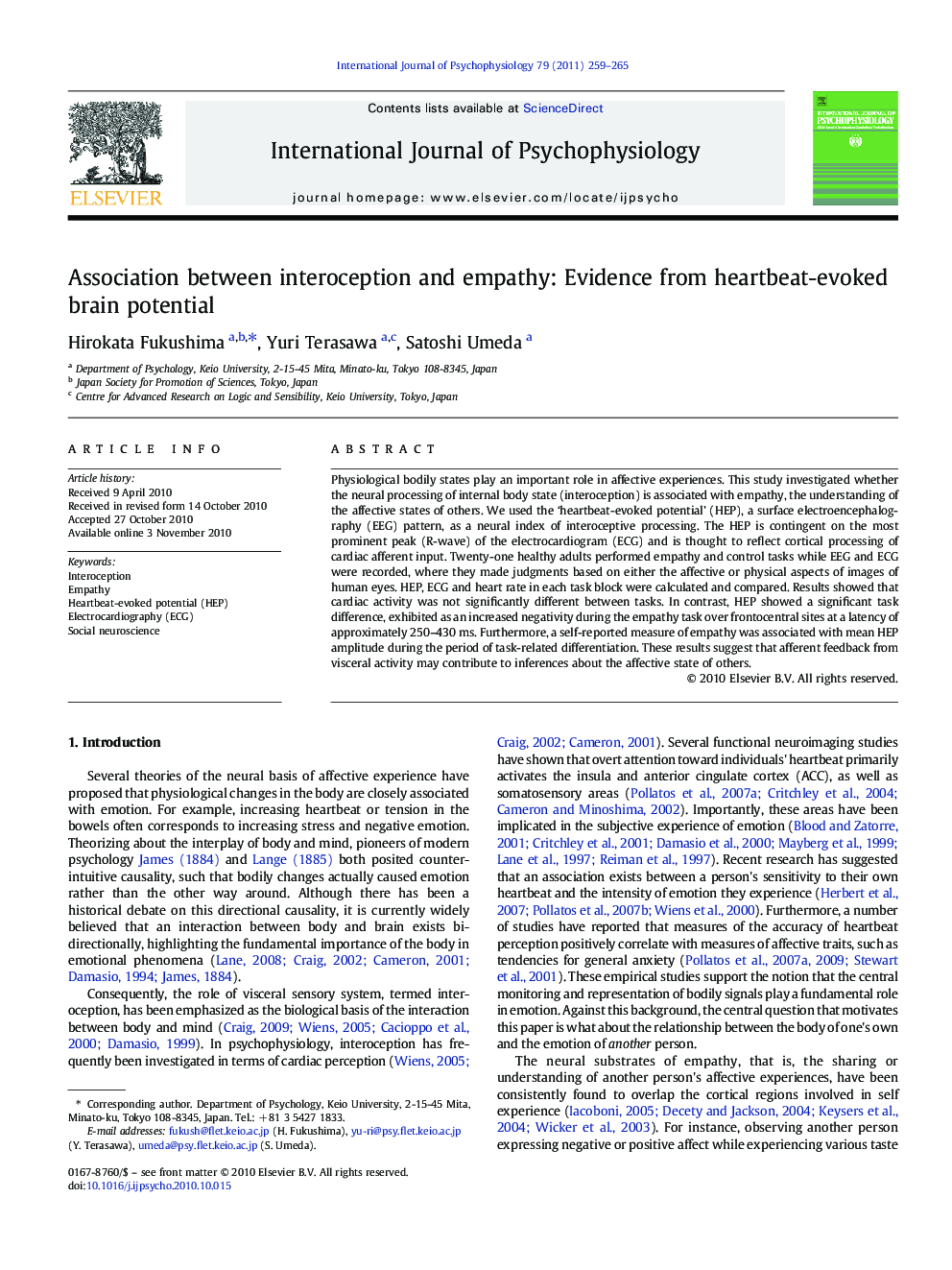| کد مقاله | کد نشریه | سال انتشار | مقاله انگلیسی | نسخه تمام متن |
|---|---|---|---|---|
| 930317 | 1474458 | 2011 | 7 صفحه PDF | دانلود رایگان |

Physiological bodily states play an important role in affective experiences. This study investigated whether the neural processing of internal body state (interoception) is associated with empathy, the understanding of the affective states of others. We used the ‘heartbeat-evoked potential’ (HEP), a surface electroencephalography (EEG) pattern, as a neural index of interoceptive processing. The HEP is contingent on the most prominent peak (R-wave) of the electrocardiogram (ECG) and is thought to reflect cortical processing of cardiac afferent input. Twenty-one healthy adults performed empathy and control tasks while EEG and ECG were recorded, where they made judgments based on either the affective or physical aspects of images of human eyes. HEP, ECG and heart rate in each task block were calculated and compared. Results showed that cardiac activity was not significantly different between tasks. In contrast, HEP showed a significant task difference, exhibited as an increased negativity during the empathy task over frontocentral sites at a latency of approximately 250–430 ms. Furthermore, a self-reported measure of empathy was associated with mean HEP amplitude during the period of task-related differentiation. These results suggest that afferent feedback from visceral activity may contribute to inferences about the affective state of others.
Research Highlights
► Heartbeat-evoked brain potential (HEP) shows altered waveform in an empathy task.
► The HEP modulation is observed around frontocentral electrode sites.
► The HEP amplitude is correlated with participants' empathic trait scores.
Journal: International Journal of Psychophysiology - Volume 79, Issue 2, February 2011, Pages 259–265